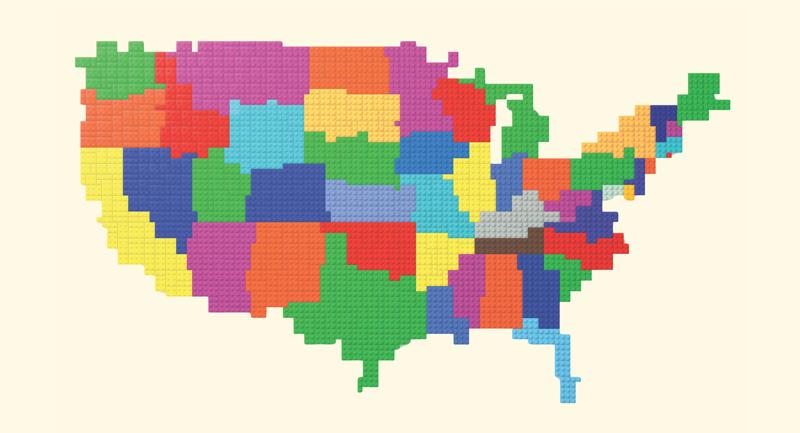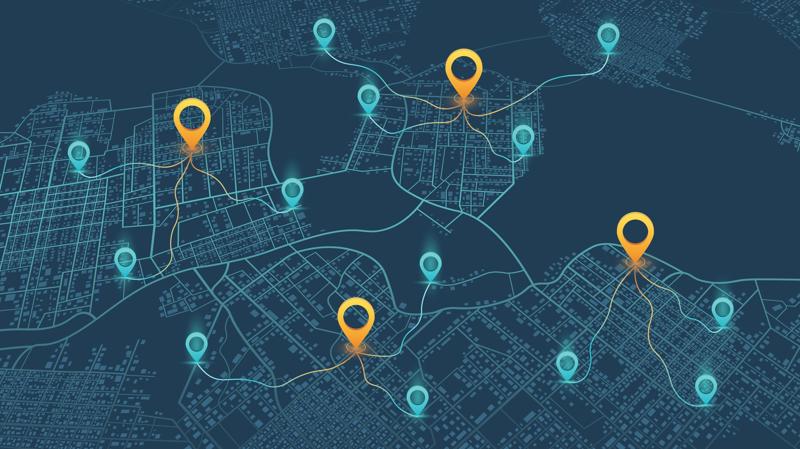Among instructional experts, the value of pre-assessments is a matter of some debate. Advocates claim pre-assessments provide essential data about the knowledge, skills, and dispositions students bring to learning tasks. They stress that teachers need this information to plan appropriate and effective instructional activities (Hockett & Doubet, 2014). Critics contend, however, that most pre-assessments only confirm what teachers already know: Students don't know what they haven't yet been taught. Furthermore, pre-assessments initiate learning activities with a failure experience for most students, potentially altering their disposition toward upcoming content (Guskey & McTighe, 2016).
On two things, however, both advocates and critics of pre-assessments agree. First, pre-assessments can vary widely in their purpose, form, and content. What works for one purpose in one context may not be effective for another purpose or in a different context. Second, neither advocates nor critics can support their point of view with strong re-search evidence.
So what do we know about pre-assessments that can inform this discussion? How can that information guide teachers to appropriately and efficiently use pre-assessments to improve learning for all students?
Interaction and Continuity
Although interest in pre-assessments has surged in recent years, largely due to their integral nature to both personalized learning and differentiated instruction (Tomlinson & Moon, 2013), the theoretical basis for pre-assessments can be traced to a much earlier time. In his classic book Experience and Education, John Dewey (1938) stressed that educators must understand two principles of human experience. The first is interaction, which Dewey described as the relationship between the current situation and our stored past. In other words, learning depends on the connections we make between our present and past experiences. The second is continuity, meaning that all experiences are carried forward and influence future experiences. As we change with each new experience, those changes become a part of us and affect how we approach future experiences.
For teaching to be effective, Dewey argued that educators must find ways to relate current learning tasks to students' past experiences. A well-designed pre-assessment could offer teachers crucial insights into what experiences students bring to learning tasks and furnish the basis for planning truly meaningful instruction.
Research Gaps
Despite its long history in education, few sources offer a clear definition of the term pre-assessment. Generally speaking, pre-assessment is any means used by teachers to gather information about students prior to instruction. A pre-assessment might be a formal, pencil-and-paper instrument that asks students questions about certain academic content, much like a typical pre-test. It might involve having students develop "concept maps" to illustrate their ideas connected to a topic. But a pre-assessment could also be an informal discussion in which teachers ask students about their past experiences. A teacher might ask students, "Have you ever heard of …?" or "Tell me what you know about …." A pre-assessment might be a simple "thumbs up/thumbs down" survey in which students indicate whether they know specific facts they need to understand before beginning a unit of study.
Research on pre-assessments has been scant, with most studies focusing on the use of pre-assessments for two primary purposes. The first is to identify exceptional learners—both gifted/advanced students and those who may have learning deficits or disabilities—for placement into alternative instructional programs (Jenkins & Sekayi, 2016; Kastner & Gottlieb, 1991; Myles, Ormsbee, & Simpson, 1997).
The second purpose of pre-assessments in research studies is to establish a baseline of performance from which student growth or learning gain can be gauged (Lazarowitz & Lieb, 2006; Wagner, Sasser, & DiBiase, 2002). This typically requires teachers to develop "parallel forms" of assessments that measure the same knowledge and skills but use slightly different questions or prompts.
Teachers administer the first as a "pre-test" before instruction begins and the second as a "post-test" when instructional activities are completed. Comparing differences in scores provides an indication of how much students gained and what improvements were made.
In the real world, the pre-test and post-test approach can be compromised, however, if results are attached to grades for students or accountability for teachers. When teachers base students' grades on progress from pre-test to post-test, students recognize that doing poorly on the pre-test enhances their chances to show improvement and earn higher grades on the post-test. Similarly, when teachers are held accountable for student gains or are involved in value-added models of evaluation, ensuring that students do poorly on the pre-test enhances their chances of success.
Researchers further note that pre-test to post-test gains can be confounded by factors outside of instruction (Marsden & Torgerson, 2012). Natural trends in students' growth and maturation sometimes can account for improvements in scores. Circumstances in students' lives apart from specific instructional experiences also may affect the change. In some cases, teachers tell students not to worry about doing poorly on the pre-test but then urge students to do their very best on the post-test. Furthermore, the pre-test experience itself can often sensitize students to what is expected and influence their post-test performance.
Measures of Learning
Teachers can design pre-assessments to measure any type of learning goal: cognitive, affective, or behavioral (Bloom et al., 1956; Krathwohl, Bloom, & Masia, 1964; Simpson, 1966). Cognitive pre-assessments address academic goals and focus on what students know and can do. For instance, a teacher may ask what students remember from a previous lesson or pose an initial question such as, "Why is it warm in summer and cold in winter?" Cognitive pre-assessments are the most common form used in classrooms today.
Teachers use affective pre-assessments to tap into students' attitudes, beliefs, dispositions, or interests. Teachers might ask students how confident they feel in learning new things, how much they like school, how much effort they put into their schoolwork, or if they see themselves as hardworking and conscientious (Mattern, Sanchez, & Ndum, 2017).
Behavioral pre-assessments typically address physical skills or specific and observable skills, such as the performance of athletic proficiencies or playing a musical instrument. These assessments can also gauge social-emotional skills, such as students' ability to work collaboratively with classmates or show respect for alternative points of view.
Across all academic domains, pre-assessments generally come in three forms. These three forms—prerequisite, present, and preview—differ in their purpose, structure, and content. They address different questions, provide different information, and are used by teachers in different ways to help student learn.
Prerequisite
Pre-requisite pre-assessments address what students need to know and be able to do to get started. Often these pre-assessments measure concepts or skills presented in previous grade levels, courses, or lessons. The pre-requisites for understanding the equation of a line in algebra, for example, would include knowledge of the coordinate system and an understanding of the concepts of intercept and slope.
In other instances, pre-requisites may be prior experiences that teachers plan to build on in forthcoming lessons. To introduce a lesson on personal responsibility and regard for others, for example, teachers might ask students if they have cared for a family pet or looked after a younger sibling. To better understand students' dispositions about learning, teachers might ask students about times when they struggled to learn a new skill or felt nervous in a new and unfamiliar situation.
Present
Present pre-assessments address students' current knowledge, skills, dispositions, and interests. They seek to determine where students are right now and their existing level of skill or understanding. Teachers use this type of pre-assessment when they introduce a new instructional unit by asking students questions such as, "Tell me what you know about …," "What have you learned before about …?" or "Show me how you do …." Present pre-assessments are often used to place students in an instructional sequence. They also may be used to gather information about students' current attitudes, beliefs, or feelings to target specific affective aspects of learning.
Preview
Preview pre-assessments measure the knowledge, skills, and dispositions that make up the learning goals of a forthcoming unit or task. They identify for students what they will be learning and perhaps why it is important. Assessments used to measure student growth by comparing pre- and post-test results typically fall into this category, as do pre-assessments used to determine whether some students have already acquired the intended learning goals and can move on to more advanced material.
Some preview pre-assessments are designed to pinpoint specific student misunderstandings or misconceptions that may need to be addressed. In most cases, however, these misconceptions can be anticipated and addressed in lesson planning to save valuable instructional time. Several resources exist for this purpose. The website Understanding Science, for example, developed by the University of California Museum of Paleontology, identifies students' most prevalent misconceptions in science. Although the learning goals measured by each of these forms of pre-assessment are distinct, their purpose sometimes overlaps. In a present pre-assessment, for example, a teacher may include several items that measure specific prerequisite knowledge and skills. In introducing a science unit on planetary motion, a teacher may ask students what they know about the planets in our solar system and also address the concepts of rotation and revolution.
A Telling Study
Although we currently have little research evidence showing that the regular use of pre-assessments leads to more effective instructional practices or improved student learning, one early study on prerequisite pre-assessments provides a striking exception. This study was conducted 35 years ago, but employed a scientifically rigorous research design and demonstrated the profound influence teachers' appropriate use of pre-assessment data can have on student learning.
Fernando Leyton-Soto (1983) wanted to know if taking time to teach students specific prerequisite skills at the beginning of a course or instructional sequence might influence how well they learn more advanced concepts. To test his idea, he chose high school courses in which prerequisite knowledge and skills crucial to students' success were easily identified. Specifically, he selected second-level courses in mathematics and foreign languages. The prerequisites for Algebra II, for example, come from Algebra I.
Leyton-Soto helped the teachers of these second-level courses in an inner-city school district develop brief pre-assessments to measure students' prerequisite knowledge and skills. Half of the teachers, randomly selected, used the first two weeks of the semester to teach students these prerequisites to a mastery level, while the other half offered only a brief review and began instruction on the new course material as usual. Leyton-Soto then helped half of the teachers in each of these groups to implement mastery learning instructional strategies that included regular administration of formative assessments followed by individualized corrective activities to help students remedy their learning difficulties.
This "crossed" design allowed Leyton-Soto to compare the results from four groups of classes where teachers: (1) did not address prerequisites and taught with traditional methods; (2) taught the prerequisites but followed with their traditional methods; (3) did not address the prerequisites but used mastery learning strategies; and (4) addressed the prerequisites and implemented mastery learning strategies. To make his comparisons, Leyton-Soto used the percentage of students who achieved a mastery level (a grade of A or B) on a common course final examination designed to measure higher level skills. His results are shown in Figure 1. Leyton-Soto found that using pre-assessments to identify and then teach students those specific prerequisite skills resulted in 20 percent more students achieving mastery on a comprehensive course exam. Using mastery learning strategies led to a 35 percent increase. But when combined, the effects were cumulative. The number of students who achieved a mastery level on the comprehensive course examination rose to 61 percent. Viewed another way, the combination of teaching the prerequisites plus mastery learning resulted in more than seven times the number of students reaching the mastery standard than were able to reach it under more traditional methods of instruction.
Leyton-Soto's study was conducted in only a few subject areas and under tightly controlled conditions, so we need to be cautious in interpreting these results and avoid generalizing. Nevertheless, these findings are extremely promising. They show that when teachers use the results from carefully designed pre-assessments to help students develop the prerequisite knowledge and skills they need to succeed, the results can be significant.
Knowing the Purpose
Current evidence on the use of pre-assessments justifies both prudent skepticism and cautious optimism (Guskey & McTighe, 2016). In some settings, pre-assessments can guide teachers to more effective instruction and higher levels of student learning, while in others they waste valuable instructional time by simply confirming what teachers already know. To use pre-assessments effectively, teachers must keep in mind the difference in purpose and effective use of prerequisite, present, and preview pre-assessments.
Important research evidence shows prerequisite pre-assessments can be particularly beneficial (Richland, Kornell, & Kao, 2009), but only when teachers use the resulting information to help students master specific prerequisite knowledge and skills so to prepare for upcoming learning tasks. This requires teachers to think carefully about what students need to begin their learning journey, and then to take specific steps to remedy any identified deficits. Short, informal prerequisite pre-assessments followed by brief reviews hold great promise, especially when students understand the purpose is to assure their success—not judge or evaluate them as learners.
Although teachers can generally anticipate students' misconceptions and potential misunderstandings about specific concepts, present pre-assessments can help teachers identify which students have these misconceptions. In addition, present pre-assessments may offer teachers valuable information on students' interests, current involvements, and preferred ways of learning that could be useful in planning instructional activities.
Preview pre-assessments provide teachers the basis for monitoring students' progress and for measuring growth. They also can help focus students' attention on specific learning goals and communicate expectations for students' performance. Teachers must assure students, however, that results will be used to guide learning activities and do not reflect any lack or deficiency on their part.
Careful consideration of the purpose, form, and content of pre-assessments can guide teachers in taking advantage of the potential benefits of prerequisite, present, and preview pre-assessments while avoiding their potential drawbacks. Although not necessary in advance of every lesson, the occasional and purposeful use of well-crafted pre-assessments can be a helpful tool for teachers in their efforts to have all students learn well.
Copyright © 2018 Thomas R. Guskey








